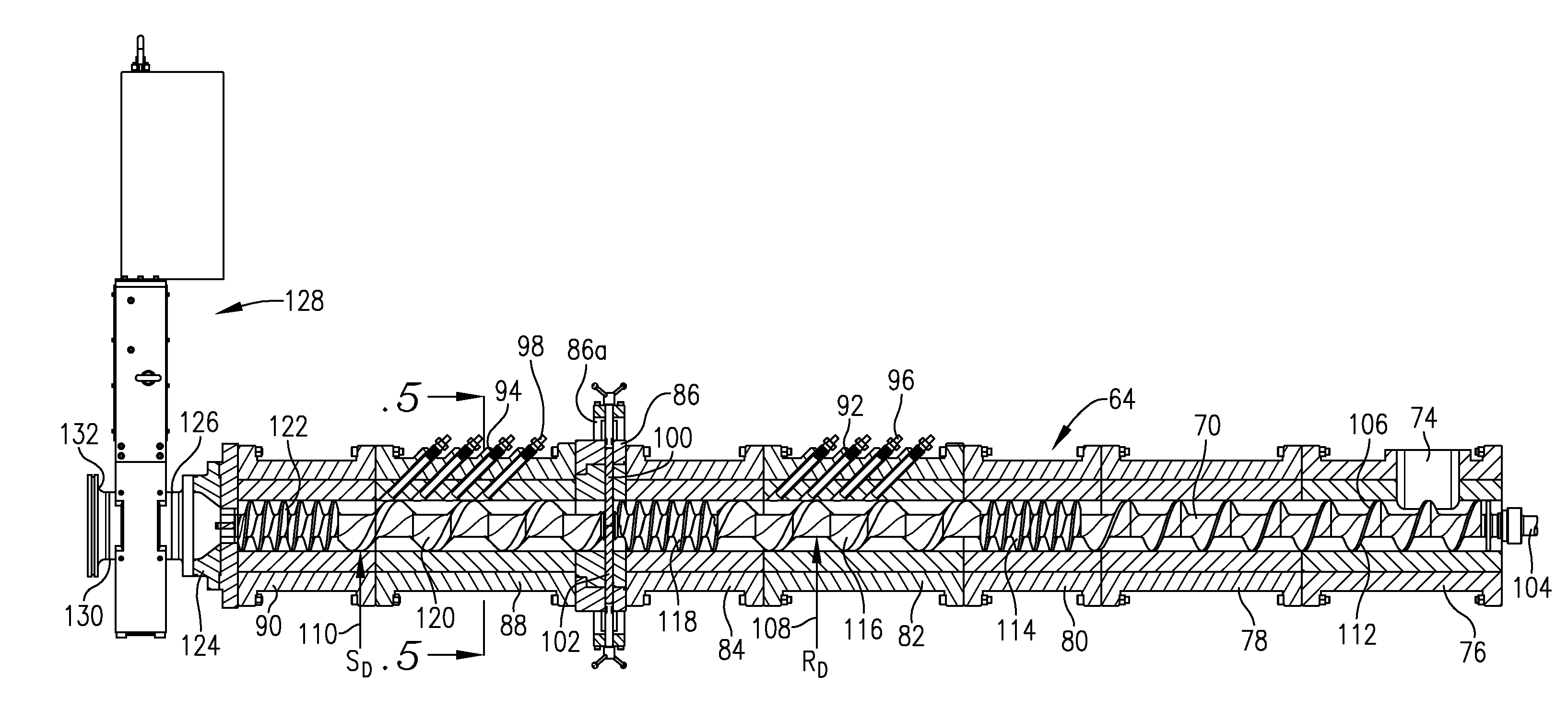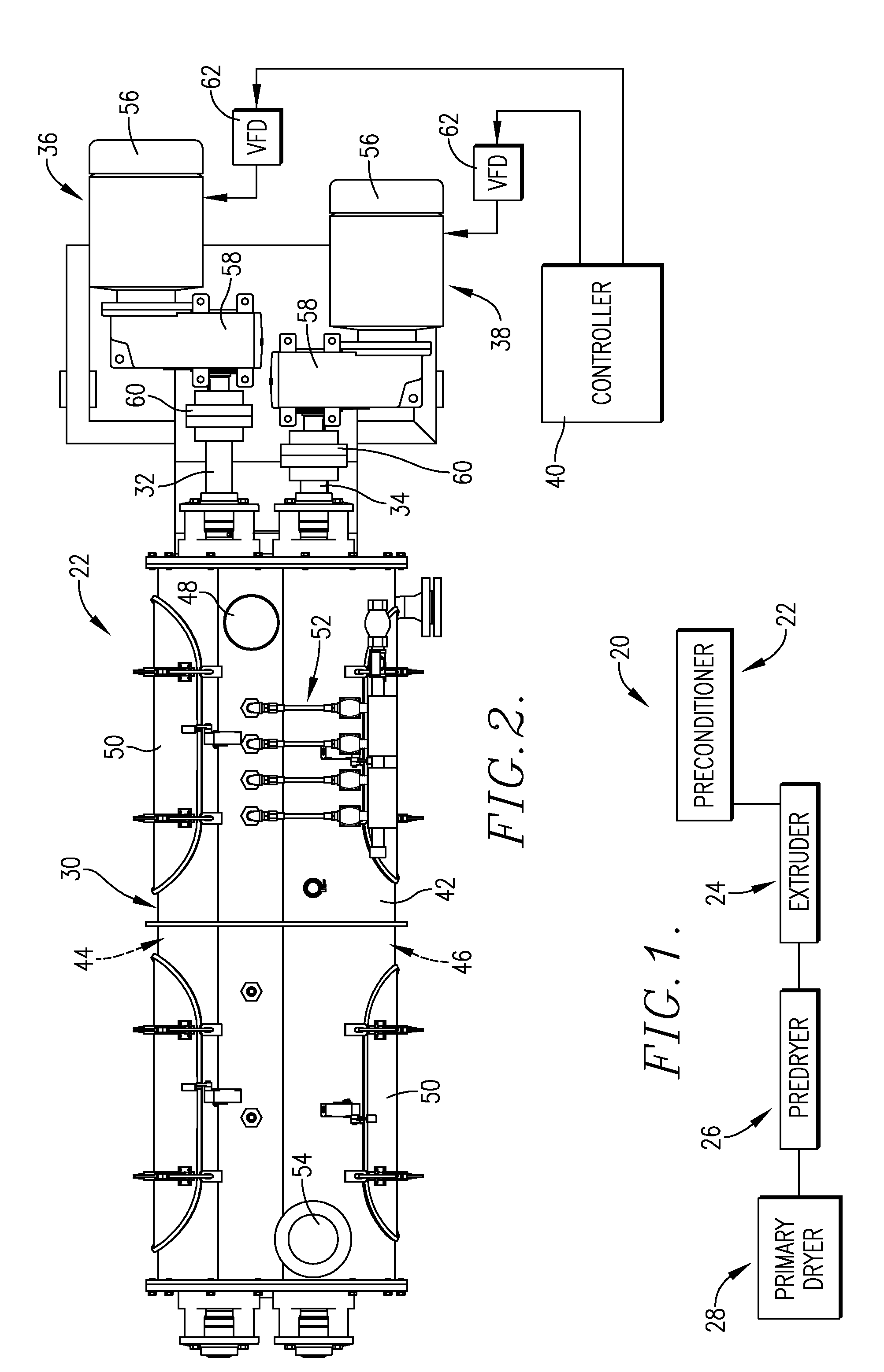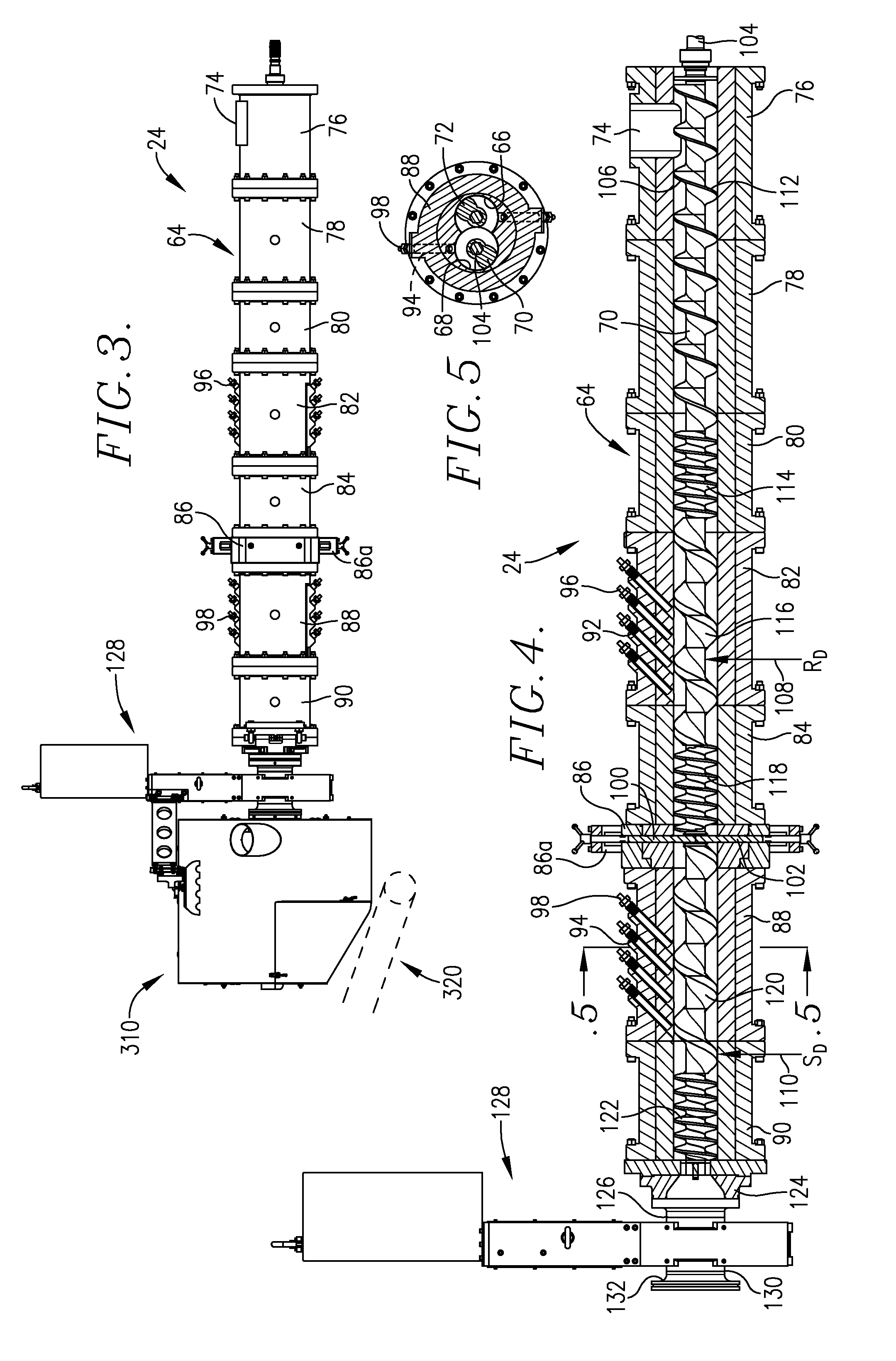Production of engineered feed or food ingredients by extrusion
a technology of engineered feed and food ingredients, applied in the field of improved extrusion processes, can solve the problems of water and air pollution, high energy consumption, and high environmental problems, and achieve the effect of reducing or eliminating the need for plant rendering
- Summary
- Abstract
- Description
- Claims
- Application Information
AI Technical Summary
Benefits of technology
Problems solved by technology
Method used
Image
Examples
examples
[0074]The following examples set forth preferred techniques for the manufacture of the engineered ingredients of the invention. It is to be understood, however, that these examples are provided by way of illustration only, nothing therein should be taken as a limitation upon the overall scope of the invention.
[0075]In a series of extrusion tests, engineered ingredient products in accordance with the invention were prepared using the equipment described above, namely a preconditioner, twin-screw extruder, pre-dryer, and final dryer. The following recipes were used in the extrusion runs, where all percentages are on a by-weight basis, where the total weight of the Dry Ingredient Recipes is taken as 100% by weight, and the total weight of the Slurry Recipes are taken as 100% by weight. In each case, the total of the dry and slurry recipes were individually added to the preconditioner, and the preconditioned materials were fed to the extruder to create the extrudable mixture therein, i....
PUM
 Login to View More
Login to View More Abstract
Description
Claims
Application Information
 Login to View More
Login to View More - R&D
- Intellectual Property
- Life Sciences
- Materials
- Tech Scout
- Unparalleled Data Quality
- Higher Quality Content
- 60% Fewer Hallucinations
Browse by: Latest US Patents, China's latest patents, Technical Efficacy Thesaurus, Application Domain, Technology Topic, Popular Technical Reports.
© 2025 PatSnap. All rights reserved.Legal|Privacy policy|Modern Slavery Act Transparency Statement|Sitemap|About US| Contact US: help@patsnap.com



